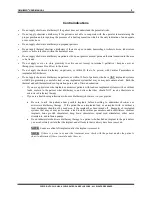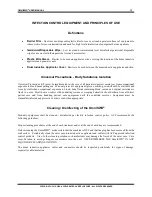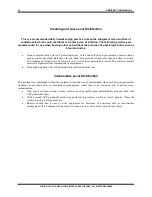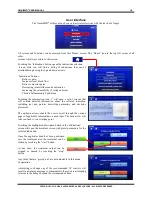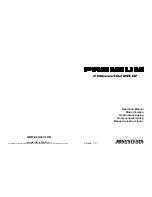
OMNISWD
®
USER MANUAL
5
COPYRIGHT © 2019-2020, ACCELERATED CARE PLUS CORP., ALL RIGHTS RESERVED
Contraindications
•
Do not apply shortwave diathermy if the patient does not understand the potential risks.
•
Do not apply shortwave diathermy if the patient is not able to cooperate with the operator in maintaining the
proper position and in reporting the presence of a heating sensation which is the only indication of an adequate
or excessive dose.
•
Do not apply shortwave diathermy on pregnant patients.
•
Do not apply thermal shortwave diathermy if there are open wounds, hemorrhage, ischemic tissue, tuberculous
joints, or acute infections within the treatment area.
•
Do not apply shortwave diathermy on patients who do not possess normal pain and thermal sensation in the area
to be treated.
•
Do not apply over or in close proximity to active cancer (except in terminal / palliative / hospice care), as
therapy may increase blood flow to the tumor.
•
Do not apply shortwave diathermy on patients, or within 10 feet of a person, with Cardiac Pacemakers or
implanted defibrillators.
•
Do not apply shortwave diathermy on patients, or within 10 feet of patients, who have
ANY
implanted systems
with RF programming, or metallic lead, or any implanted system that may or may not contain a lead. Both the
thermal and sub-thermal modes of operation pose a risk of tissue destruction.
o
If you are a physician who implants or monitors patients with leads or implanted systems with or without
leads, explain to the patient what diathermy is, and stress that they should NOT receive shortwave or
microwave diathermy therapy.
o
If you are a health care professional who uses diathermy (shortwave) in your practice:
•
Be sure to ask the patient about possible implants before deciding to administer shortwave or
microwave diathermy therapy. If the patient has an implanted lead or an implant with or without a
lead, diathermy should not be used even if the implant has been turned off. Examples of implanted
systems that may or may not contain a lead include cardiac pacemakers and defibrillators, cochlear
implants, bone growth stimulators, deep brain stimulators, spinal cord stimulators, other nerve
stimulators, and infusion pumps.
•
Do not administer shortwave diathermy therapy to a patient who has had an implant in the past unless
you are absolutely certain that the implant and all leads in their entirety have been removed.
NOTE:
Leads are often left implanted after the implant is removed.
NOTE: If there is a scar in or near the treatment area, check with the patient and/or the patient’s
chart to determine if there is metal under the scar.







